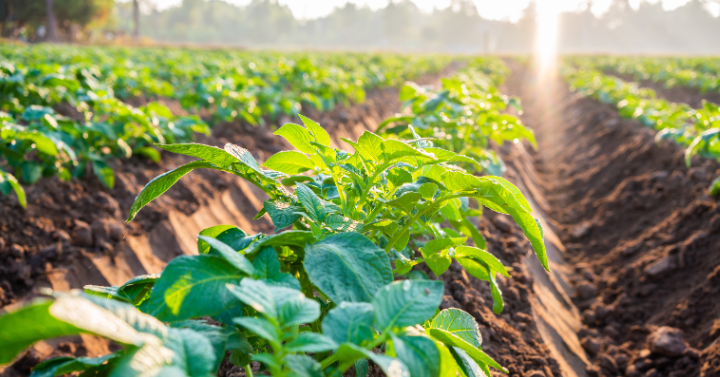In the realm of agriculture, the shift toward sustainable and eco-friendly practices is taking place slowly but surely. The biopesticides industry, at the forefront of this shift, is witnessing unprecedented growth, driven by an increasing demand for organic produce, stringent regulations on synthetic pesticides, and the global push toward environmental sustainability. This article delves into the key players shaping the biopesticides landscape and the emerging markets that are pivotal to the industry’s expansion.
Rise of Biopesticides
Biopesticides—derived from natural materials such as plants, bacteria, and certain minerals—offer a greener alternative to chemical pesticides. They are gaining traction for their lower toxicity levels, specificity to targeted pests, and minimal environmental impact. The global market for biopesticides is burgeoning, with estimates suggesting a leap from USD 2.9 billion in 2021 to over USD 3.5 billion in 2023, growing at 10.9% annually.
Key Industry Players: Collaboration and Acquisition
The biopesticides industry is characterized by a dynamic blend of established agrochemical giants and innovative biotech firms, each contributing to the sector’s growth with strategic mergers, acquisitions, and partnerships.
- Corteva Agriscience has positioned itself as a leader in the biopesticides arena through strategic acquisitions, including Stoller and Symborg. These moves have bolstered its portfolio of biological solutions, enhancing its market presence.
- Bayer has embarked on collaborations with several biological companies, including Ginkgo Bioworks and M2i Group, to expand its microbial and pheromone portfolios. These partnerships underscore Bayer’s commitment to integrating biologicals into its product offerings.
- Certis Belchim Mitsui & Co., a Japanese trading company merged two of its businesses, Certis and Belchim into one entity. Certis Biologicals will also remain as a separate subsidiary business.
These key players are not only expanding their product lines but also investing in research and development to innovate new biopesticide solutions, reflecting the industry’s shift toward sustainable agriculture.
Emerging Markets: The New Frontier
The biopesticides industry’s growth is not uniform across the globe but is particularly pronounced in certain emerging markets. These regions are witnessing a surge in demand for biopesticides, driven by the increasing awareness of sustainable farming practices, government support, and the need to meet export standards for organic produce.
- Latin America: Countries such as Brazil, Colombia, and Peru are emerging as hotspots for biopesticide growth. Brazil, with its vast agricultural lands, is adopting biopesticides to sustain its position as a global agricultural powerhouse. Colombia and Peru are leveraging biopesticides to enhance their coffee and cocoa production, respectively, with government initiatives promoting sustainable agriculture practices.
- Eastern Europe: Nations such as Bulgaria, Poland, and Hungary are investing in the biopesticides sector, driven by the EU’s stringent regulations on synthetic pesticides and the push for organic farming. These countries are focusing on reducing imports and boosting local production through increased biopesticide usage.
- Türkiye, with its strategic position between Europe and Asia, holds a highly critical place for trade. The country is a large producer of many important crops, such as hazelnuts and walnuts, which it supplies to the EU. It has also become more significant for sunflower production in recent years.
- Asia-Pacific: India and China are pivotal markets due to their large agricultural sectors and increasing adoption of sustainable farming practices. Government initiatives in these countries are promoting the use of biopesticides to reduce the environmental impact of traditional agriculture practices.
Challenges and Opportunities
While the biopesticides industry is on an upward trajectory, it faces challenges such as regulatory hurdles, a lack of farmer education on the benefits of biopesticides, and a need for the development of cost-effective production methods. However, these challenges also present opportunities for innovation, market expansion, and the development of integrated pest management solutions that combine biopesticides with traditional methods for optimal results.
The Road Ahead
The future of the biopesticides industry lies in continued innovation, strategic partnerships, and expansion into new markets. Key players will need to navigate regulatory landscapes, invest in research and development, and educate stakeholders on the benefits of biopesticides to sustain growth. Emerging markets will play a crucial role in this expansion, offering new opportunities for the application of biopesticides in diverse agricultural settings.
The biopesticides industry stands at a crossroads of opportunity and challenge. As key players and emerging markets navigate this landscape, the promise of a more sustainable and environment-friendly approach to pest management becomes increasingly attainable. The journey toward greener agriculture is complex, but with the concerted efforts of industry stakeholders, the biopesticides sector is poised for continued growth and innovation.
Now entering its fifth edition, Kline’s Global Biopesticides: Natural Pesticides in Emerging Markets extensive database and study provides a comprehensive analysis of the growing biologicals market, including sales by product type, crop, and supplier; new technologies; new products; and an outlook with five-year forecasts for each market segment.

